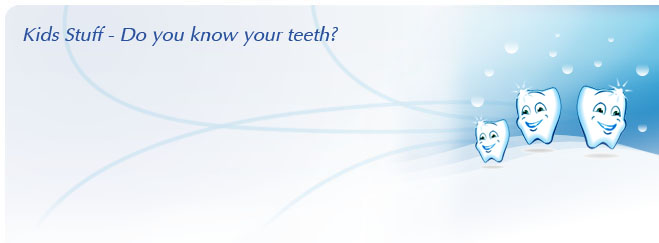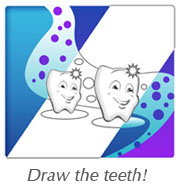
The part of the tooth you see is called the crown. The rounded high parts of the back teeth are cusps. The hard white outer covering of the tooth is the enamel. Below the gumline, holding the tooth in the jawbone is the root of the tooth. You canít see the roots. The inner portions of the tooth consist of the dentin, a bonelike tissue, and the pulp. The pulp is like a house for the nerves and blood vessels at the center of the crown and root.
Teeth have different shapes for different jobs. For example, when you eat, the upper teeth work together with the lower teeth of the same shape to bite, chew, and tear food. The names of these teeth are:
Incisors. There are eight incisors located in the front of the mouth (four on the top and four on the bottom). They have sharp, chisel-shaped crowns that cut food.

Cuspids. The four cuspids are next to each incisor. Cuspids have a pointed edge to tear food.
Premolars. Also called bicuspids, the four pairs of molars are located next to the cuspids. They crush and tear food.
Molars. There are twelve molars, in sets of three, at the back of the mouth. They have wide surfaces that help to grind food.
Adults have 32 teeth. Depending on their age, children may have fewer because they lose baby teeth as adult teeth grow.
In addition to chewing, teeth help you to speak clearly. The shape of the arch inside the mouth helps you talk. Many letters of the alphabet cannot be sounded without the help of teeth.
Teeth also give your face its shape and add to the way you look. Not only do clean, healthy teeth help you look good, they contribute to total body health and well-being. And a smile always helps you look your best.